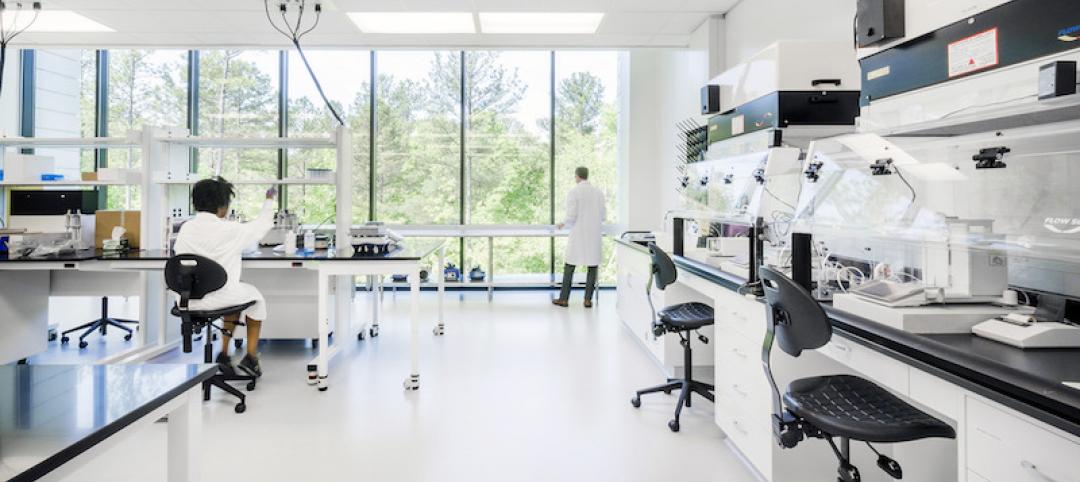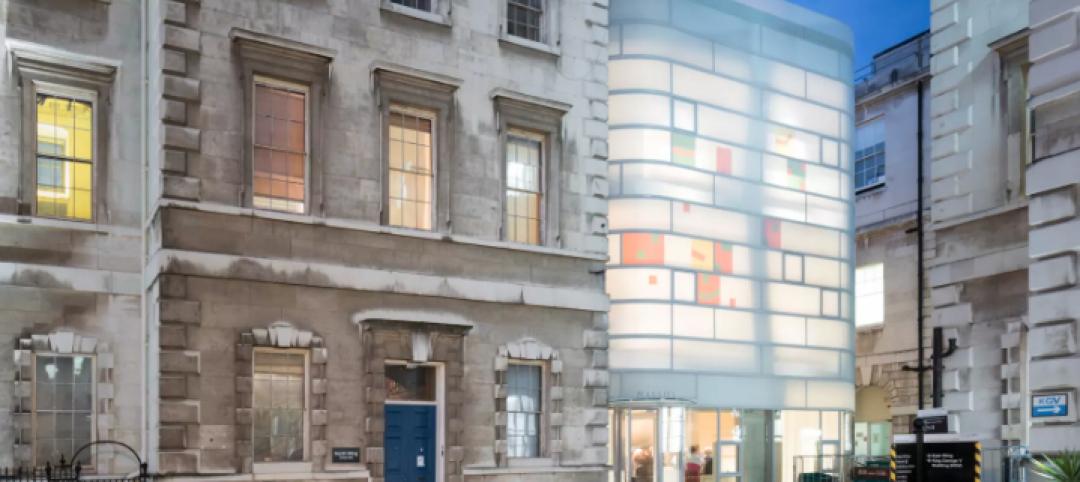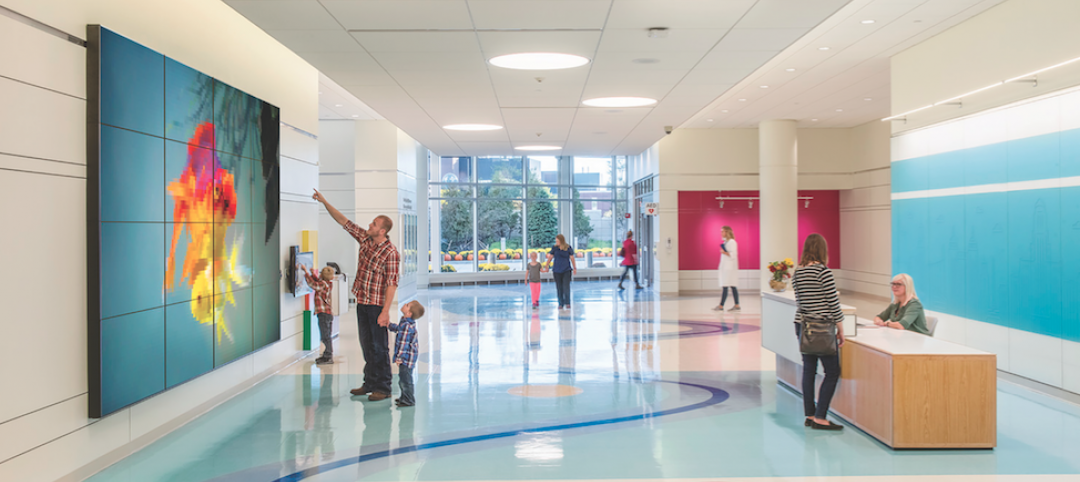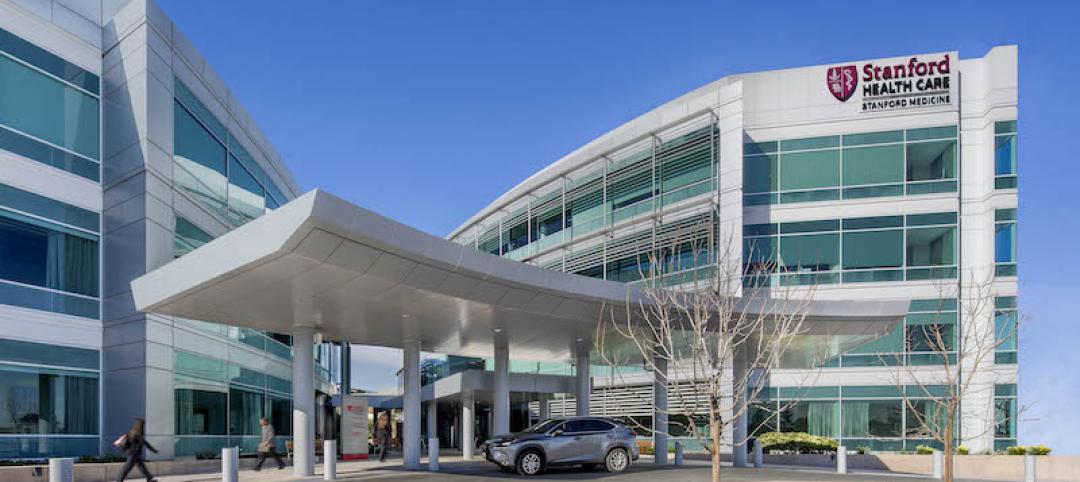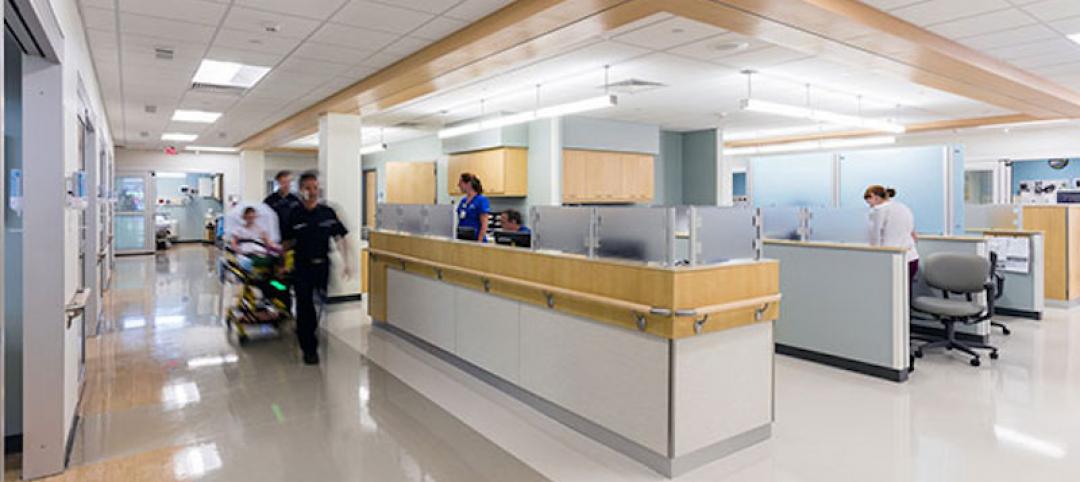Today, more than 40 million American adults suffer from a mental-health condition, and half of all chronic mental illness begins by the age of 14. Despite these overwhelming statistics, the negative stigmas associated with mental illness, combined with a scarcity of clinicians and facilities, resulted in over half of those with behavioral health conditions forgoing treatment last year.
This population is among the most marginalized in the U.S. healthcare system, but we are seeing more and better in- and out-patient and research facilities coming on line every day. What we know from recent post-occupancy evaluations and working closely with clinical staff is the critical role that design plays in removing the stigma associated with psychiatric care, normalizing the care environment, and improving patient outcomes.
Here are five ways design is transforming behavioral healthcare:
1. Transparency fosters de-stigmatization. Behavioral health clinics and institutions have long been shrouded in secrecy, perpetuating a notion that it’s shameful to receive psychiatric care.
‘The negative stigmas associated with mental illness, combined with a scarcity of clinicians and facilities, resulted in over half of behavioral health conditions forgoing treatment last year.’
— Kari Thorsen, NCIDQ, LEED AP, ZGF
For outpatients, design changes like locating the waiting room in a central corridor can send a strong message that the patient is valued and that there’s no difference between walking into a psychiatric building and any other medical building where patients are at the center of the care experience.
For example, at the University of California, San Francisco (UCSF) Child, Teen & Family Center and Department of Psychiatry Building, patient waiting rooms are located adjacent to the central atrium in a highly visible corridor.
2. Materials that evoke comfort. Behavioral and mental health facilities are often associated with institutional elements such as sterile white walls, endless linoleum hallways, and glass partitions. Conjuring images of “One Flew Over the Cuckoo’s Nest” is not uncommon.
A recent post-occupancy evaluation at the renovated Swedish Medical Center-Ballard’s Behavioral Health Unit (BHU) in Seattle found that the use of engaging colors and textures in the communal spaces are perceived as soothing and linked to positive patient experiences.
To further de-stigmatize the unit’s physical environment, existing structural columns were transformed with glass tile that feature colors and textures evoking the natural environment of the Pacific Northwest. This marks a departure from the design of older behavioral units, where columns were often wrapped in concrete and painted, leaving grooves, steel housings, and fixtures exposed.
Incorporating the use of wood, fabrics, wall coverings, and even ceramic tile—all familiar materials found in homes—into the design of inpatient and outpatient facilities can support feelings of comfort and sophistication.
3. Circadian lighting regulates calming. A growing body of research shows that tunable LED lighting—also known as circadian lighting—can support positive behaviors outcomes in settings ranging from healthcare to education. The POE findings at BHU revealed that circadian lighting in the unit’s common areas had a calming effect on patients.
This is particularly noteworthy because the unit was built within two existing hospital floors that receive little natural daylight. The circadian lighting helps synchronize patients’ natural sleep-wake rhythms, marking the passage of time and providing a sense of calm as the day winds down.
4. Naturescapes reduce anxiety. Design interventions that expose occupants to natural daylight and nature themes can reduce anxiety while also supporting an environment of safety and normalcy. At UCSF, environmental graphics referencing tree roots that grow and intertwine like neurons in the brain are intended to spur optimism and curiosity in patients that range from child to adult.
5. Design supports safety. Unlike other inpatient settings, behavioral health patients spend considerable time in commons areas with other patients and staff. Designing for visibility in corridors, common areas, group rooms, and activity rooms supports safety—as can designing for interventions that place barriers between patients and staff. At Swedish Ballard, a custom-milled, solid-surface reception desk functions as an art installation, but doubles as a barrier between patients and staff when needed.
Related Stories
Engineers | Aug 22, 2018
An electrical engineer’s take on designing successful pharmaceutical lab space
Patrick Licklider, PE, CEM, GGP, LEED AP BD+C, an electrical engineer in Clark Nexsen’s Science + technology practice, shares his perspective on what it takes to successfully design laboratory and manufacturing environments for the fast-changing pharmaceutical and biotech industry.
Healthcare Facilities | Aug 3, 2018
Seismic deadlines approaching for healthcare companies
California hospitals can save money with a holistic approach to retrofit issues.
Healthcare Facilities | Jul 30, 2018
Best in healthcare design 2018: Seven projects win AIA/AAH Healthcare Design Awards
The Steven Holl-designed Maggie’s Centre Barts cancer treatment facility in London highlights the honorees of the AIA Academy of Architecture for Health 2018 Healthcare Design Awards.
Healthcare Facilities | Jul 26, 2018
Healthcare market trends 2018: Health systems get leaner, more resilient
Hospitals set their sights on improving patient convenience and operational efficiency.
Healthcare Facilities | Jul 10, 2018
HGA designs acute care hospital for MetroHealth in Cleveland
The facility’s master plan creates a ‘hospital in a park.’
BIM and Information Technology | Jul 9, 2018
Healthcare and the reality of artificial intelligence
Regardless of improved accuracy gains, caregivers may struggle with the idea of a computer logic qualifying decisions that have for decades relied heavily on instinct and medical intuition.
Healthcare Facilities | Jun 28, 2018
New Stanford Healthcare outpatient building opens in Redwood City
The facility recently celebrated its grand opening with a ribbon-cutting ceremony.
Healthcare Facilities | Jun 26, 2018
The future of the ambulatory surgery centers and acuity levels
Offering the one-two punch of cost savings and convenience, ASCs are increasingly becoming the venue of choice for both physicians and patients.
Healthcare Facilities | Jun 26, 2018
Mesquite, Texas to receive 60-acre ‘wellness village’
Construction is anticipated to begin on the initial phase in mid-2019.
University Buildings | Jun 25, 2018
Virginia Commonwealth has at least three major expansion projects under construction
New buildings for outpatient care, engineering, and rehabilitation of serious injuries and debilities are scheduled to be completed in 2020.



